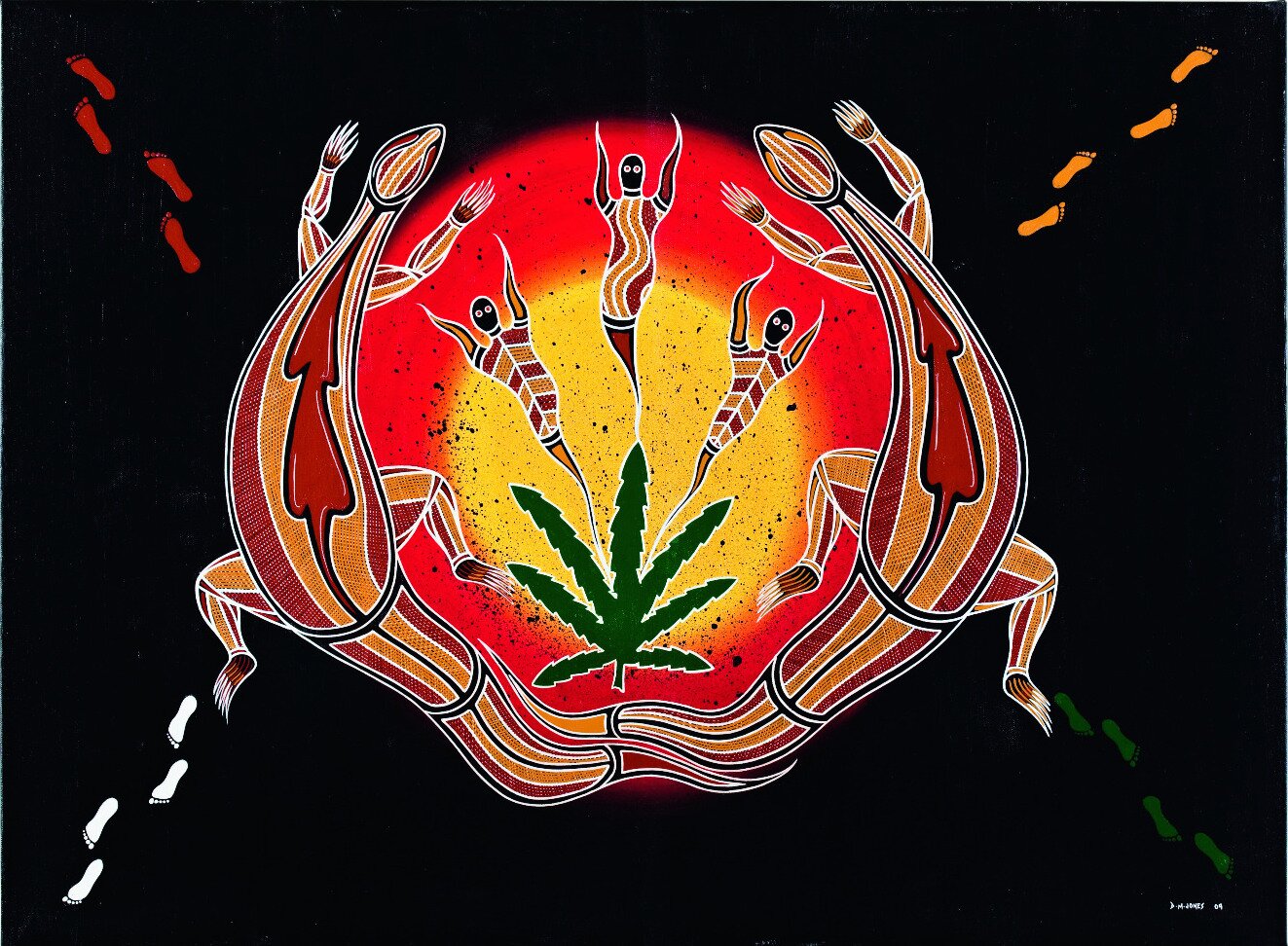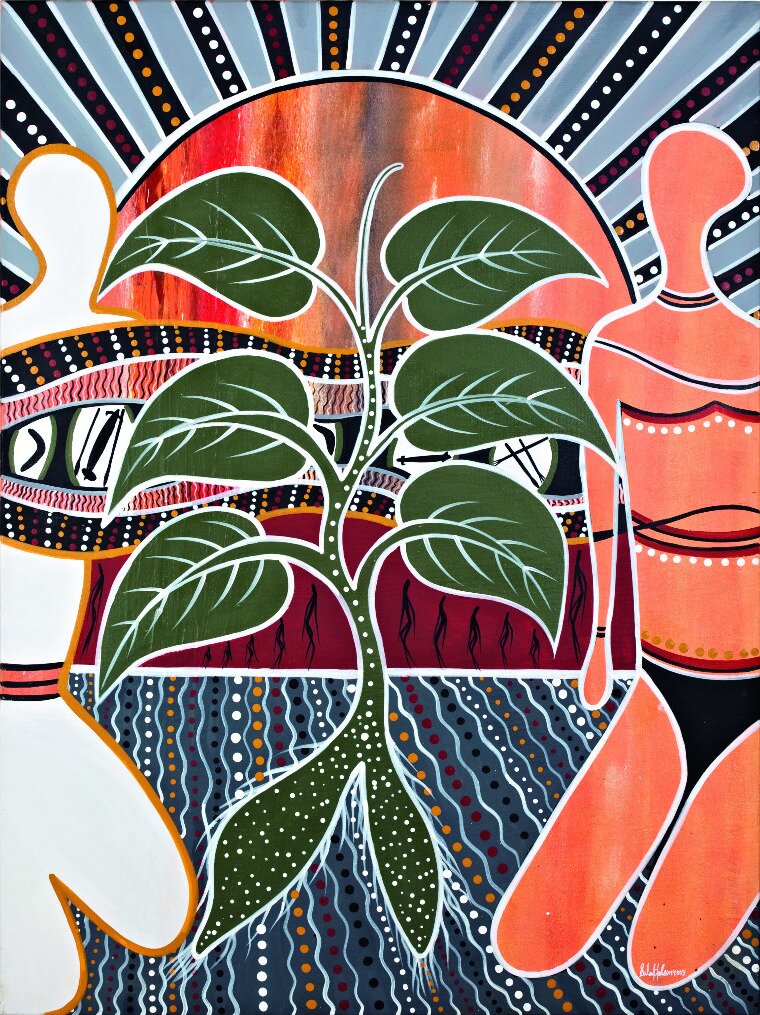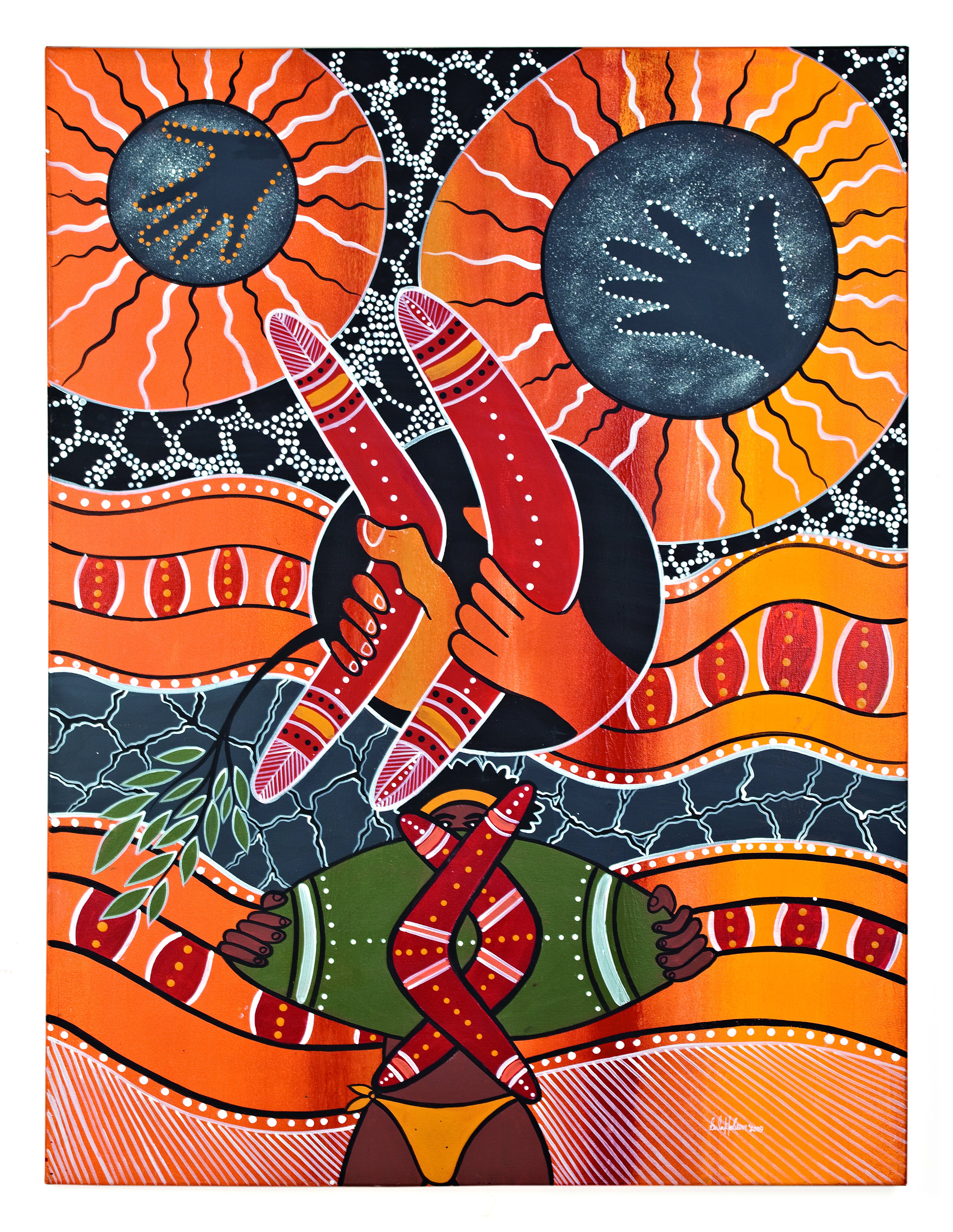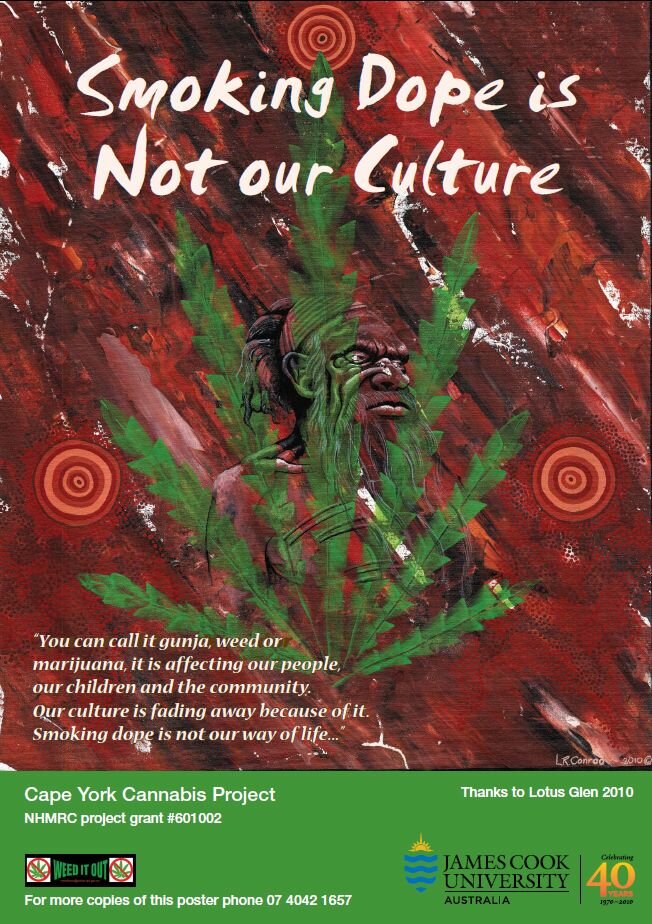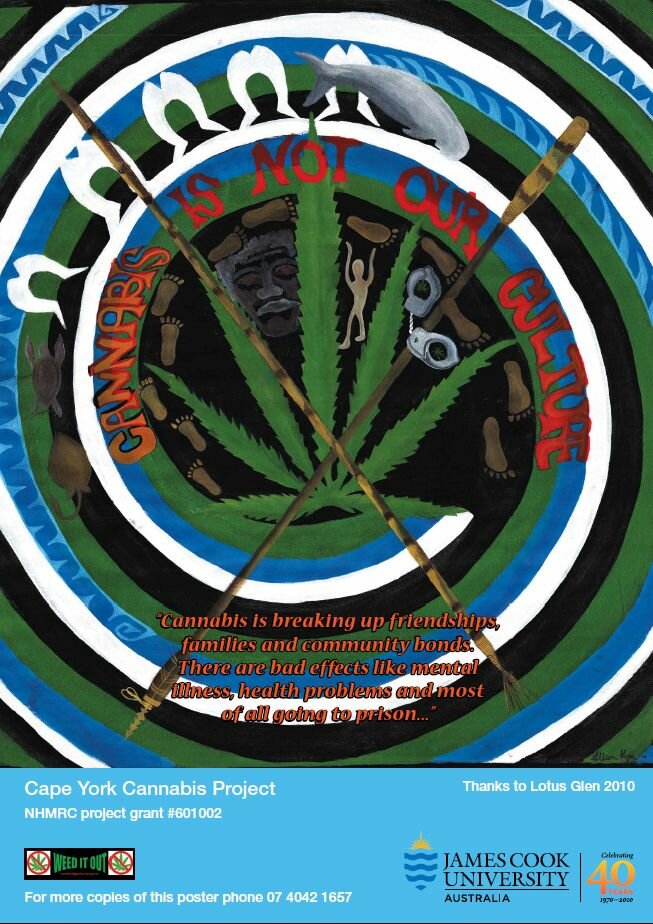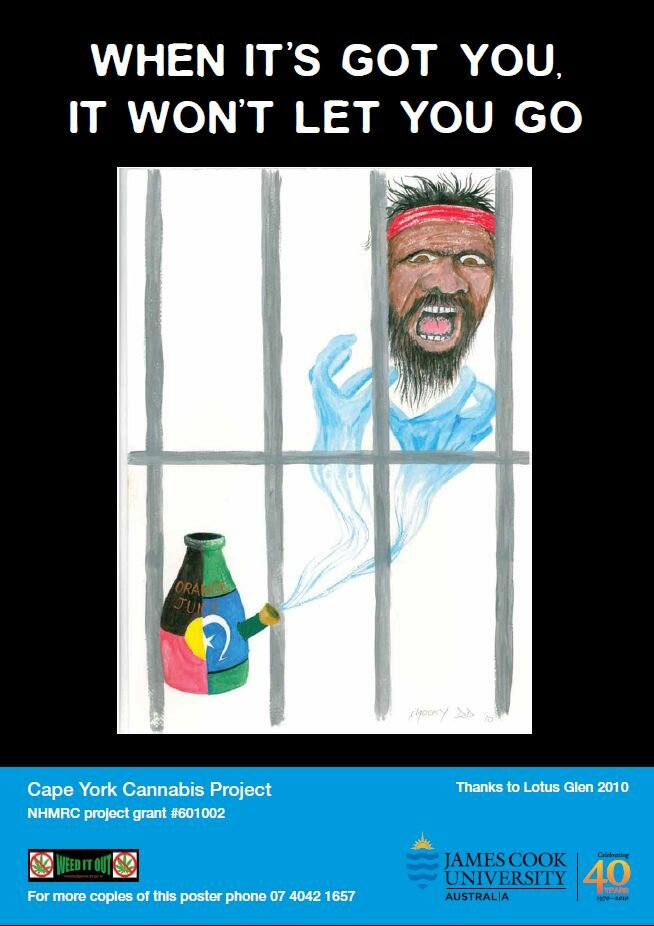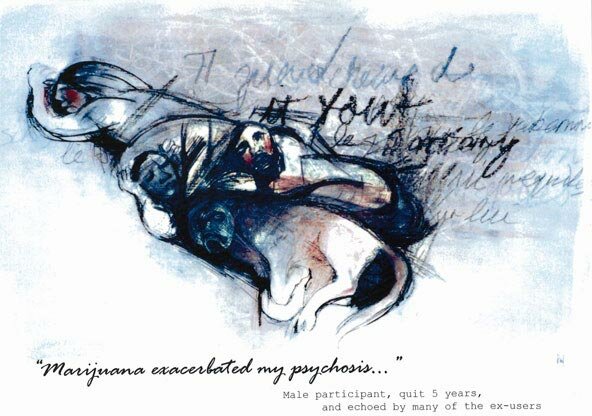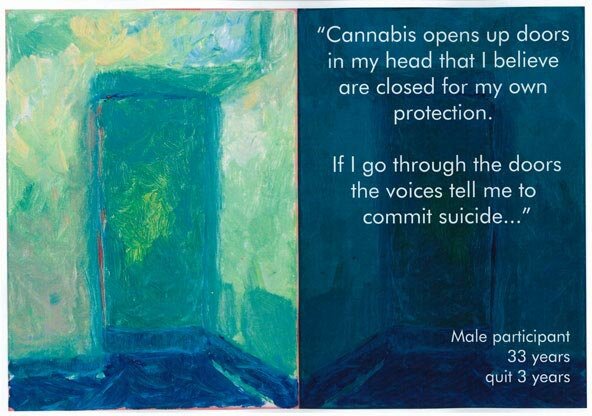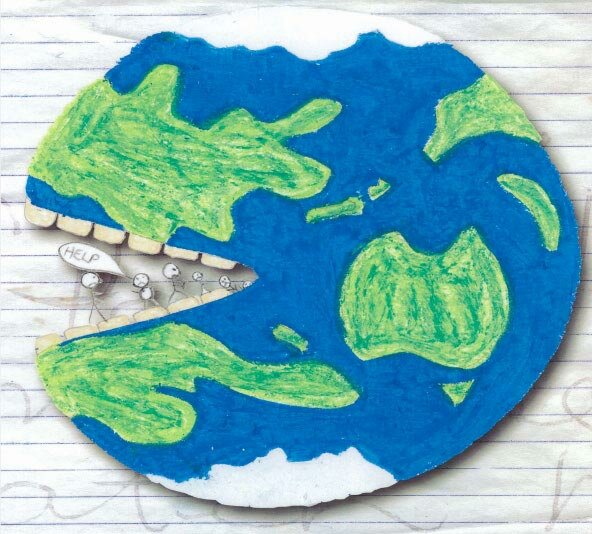
Cannabis Yarns is a NCPIC project all about sharing stories of the effect of cannabis on Aboriginal and Torres Strait Islander communities and culture. Click through the images and videos in the gallery and listen to the artists' descriptions of their work. For more information, and to submit your own art or video – click on 'get involved' below.
NCPIC has worked with two Aboriginal communities to hep locals record their stories about cannabis and how it affects people, families and opportunities. To change the conversation about cannabis in your community, start yarning about your experiences. Record people in your community sharing their stories, opinions and ideas and send to info@ncpic.org.au
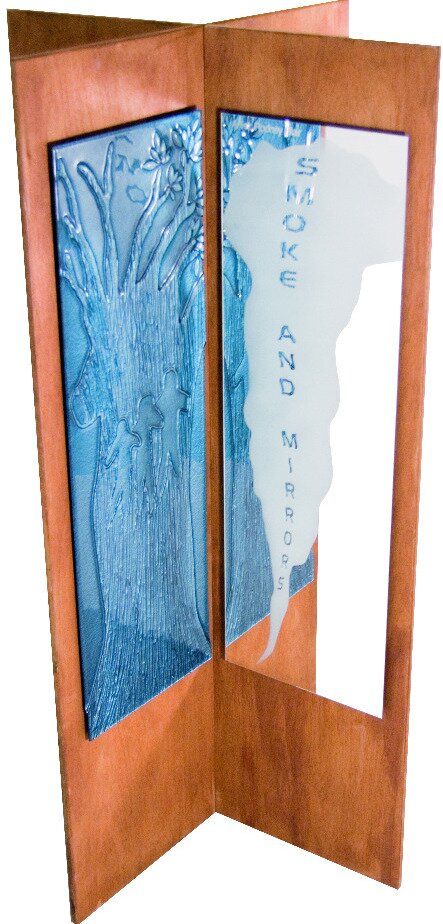
Smoke and Mirrors by Dianne McGee, Kerrie Black, Rodney Blair and Wathaurong Glass & Arts, Geelong, VIC.
The artists wanted to create a work that portrayed the importance of connection to Aboriginal culture and a journey beyond substance use for those who experienced the negative impacts of cannabis use. The use of smoke as a motif throughout the work on mirrors can provide a double meaning for the viewer. While there is a link to smoke as an aspect of cannabis use which has a negative effect of masking reality, there is a more profound connection to what smoke symbolises culturally.

This artwork is by Michael Tjangala Gallagher – Kintore, NT.
On the left side, the artist, Michael has included images of healthy lifestyle choices made by young people including softball and football. On the right hand side, he has drawn representations of cannabis and drugs from his experience. Michael says: “Leave it – petrol and gunja! Listen to your elders – our grandfathers and grandmothers.”
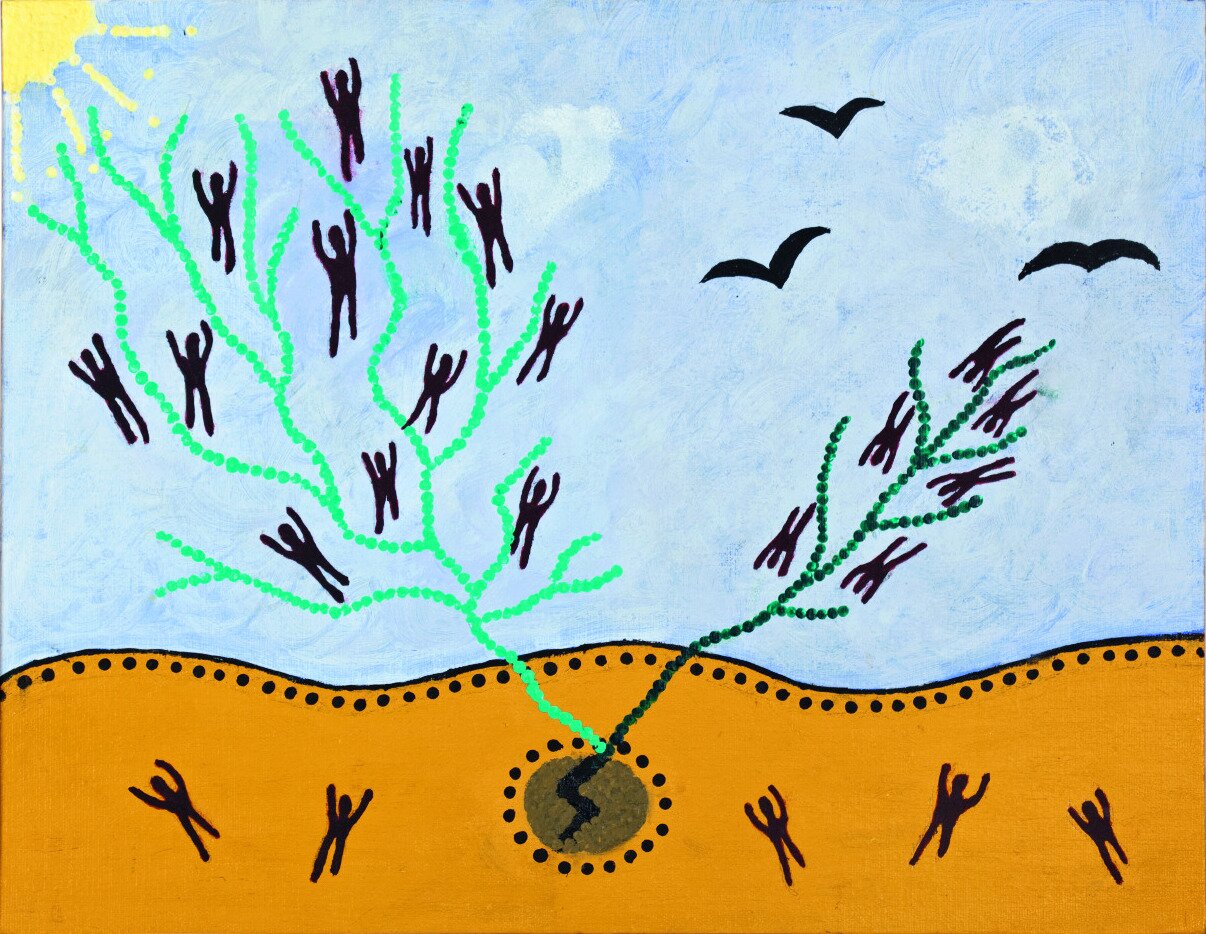
Life Force by Amanda McGowan, Nowra, NSW.
The artist says: This painting represents the life-force I believe everybody is born with. As it grows it can go two ways. It can flourish or it can wither away. As a mother I know too well how it can affect a whole family and destroy lives. There is nothing better than watching your children grow strong and happy, having a good life and spreading their seed growing new life. I hope all plants can grow strong, healthy, happy and spread their seed leaving a good legacy.
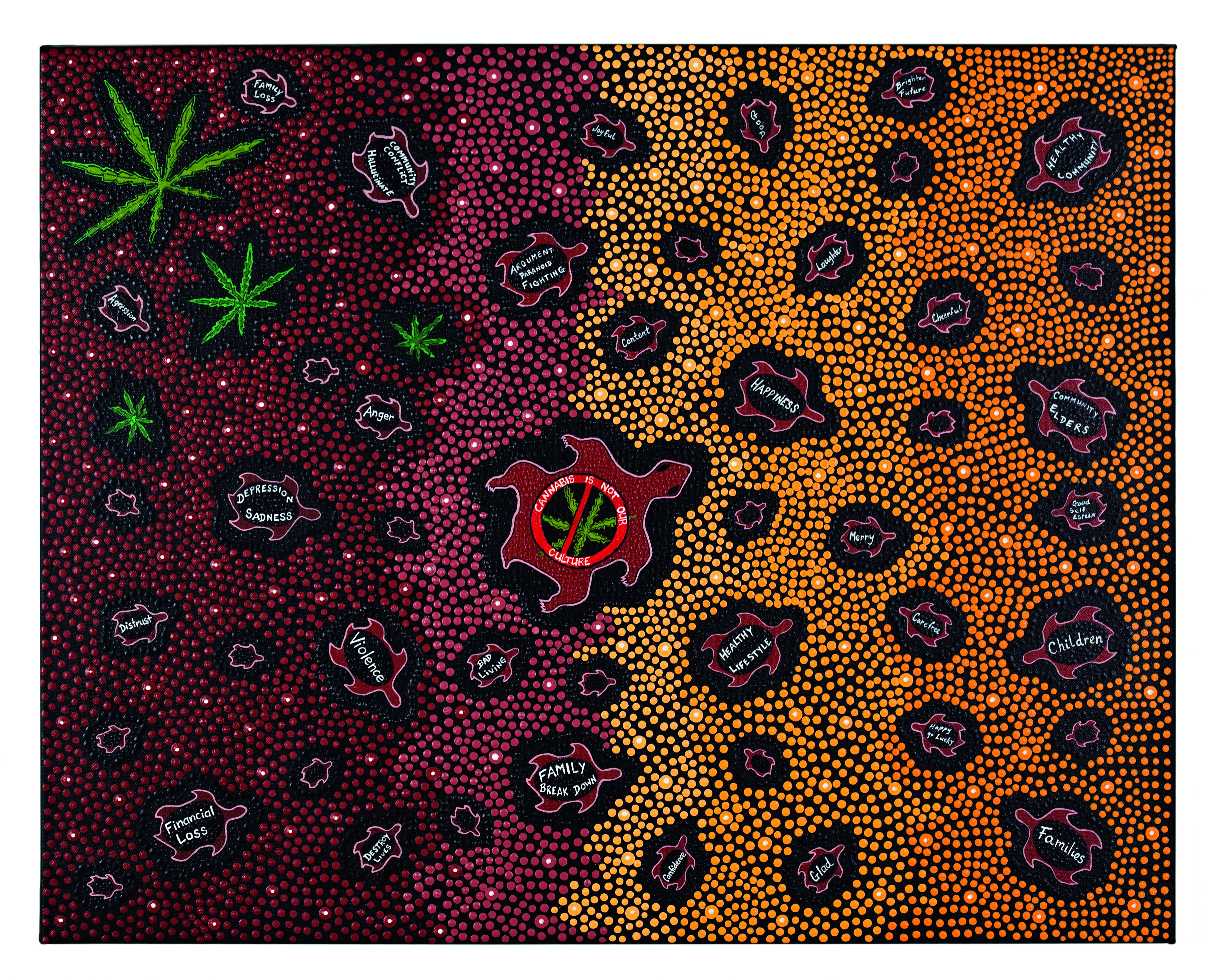
This artwork is by Barbara Avery & Judy Torrens, Jubullum, NSW.
The artists say cannabis has never been part of our culture. It causes conflict, loss of family values, younger children to be neglected, loss of respect towards Elders and other community members, mental illness and sadness. The stronger community members saw the effects on individuals and knew that path was wrong. Drugs will ruin our life, our community. It is not our culture.
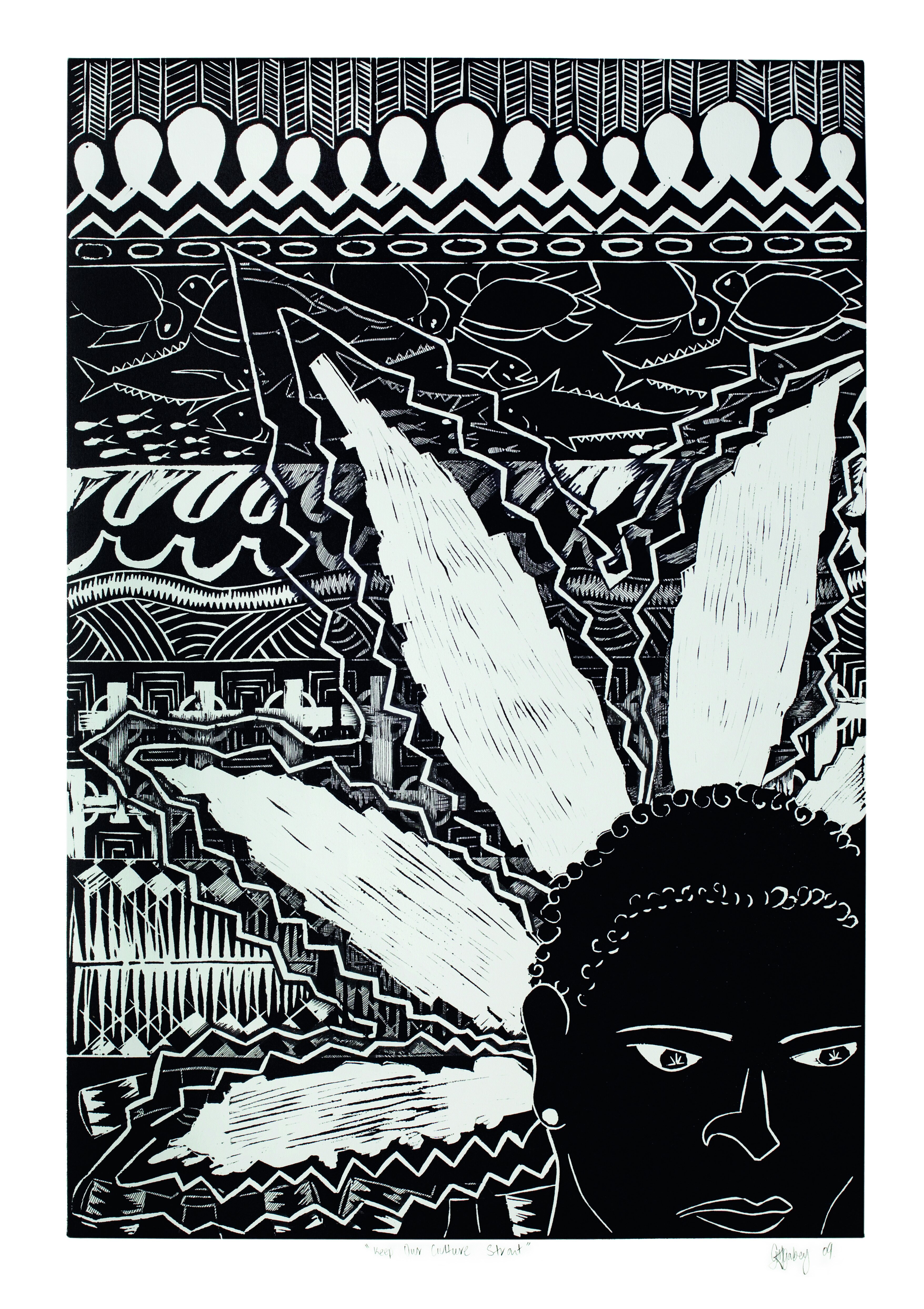
Keep Our Culture Strait by George Gabey, Thursday Island, QLD.
George is from Thursday Island in the Torres Strait which is at the tip of Queensland. This print is about how marijuana use makes you lose touch with your family, community and your culture. It shows the strong association the community has with sea food such as fish and turtles; as well as Christianity; weaving and dance traditions. Smoking drugs makes culture seem unimportant and causes disrespect to our elders.
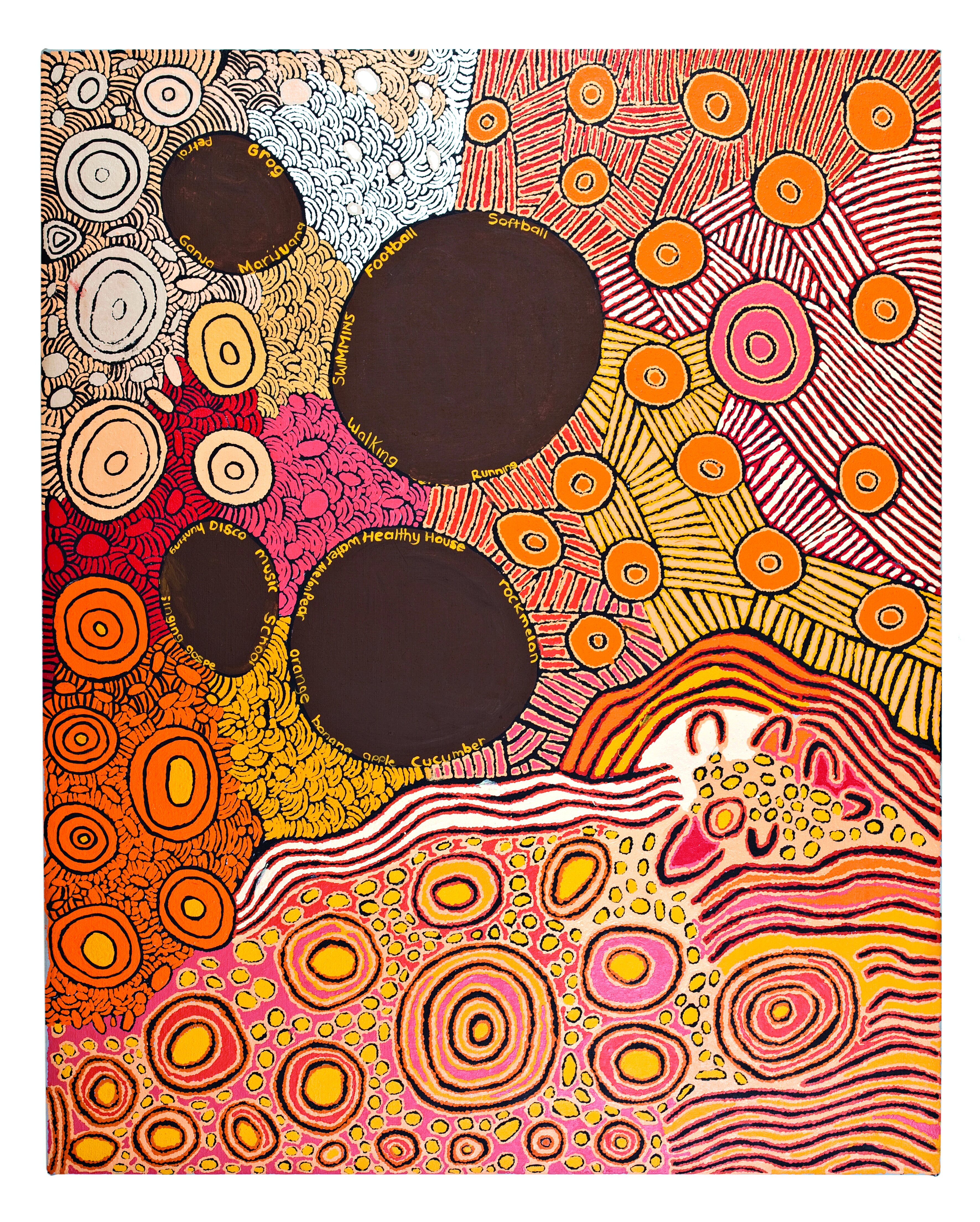
“Ngurra Palya Kanyintjaku” – “Looking after our Home” by Pelita Michaels Napurrula, Clara Napurrula & Ruby-Lee Napurrula – Kintore, NT.
This artwork depicts a healthy, safe community – free from cannabis, alcohol and other drugs. The painting reminds people of where their sources of strength come from. The painting includes images of families, local food, animals and plants, as well as the local mountain ranges – a source of strength, identity and women’s and men’s ‘dreaming’ and ceremony country.
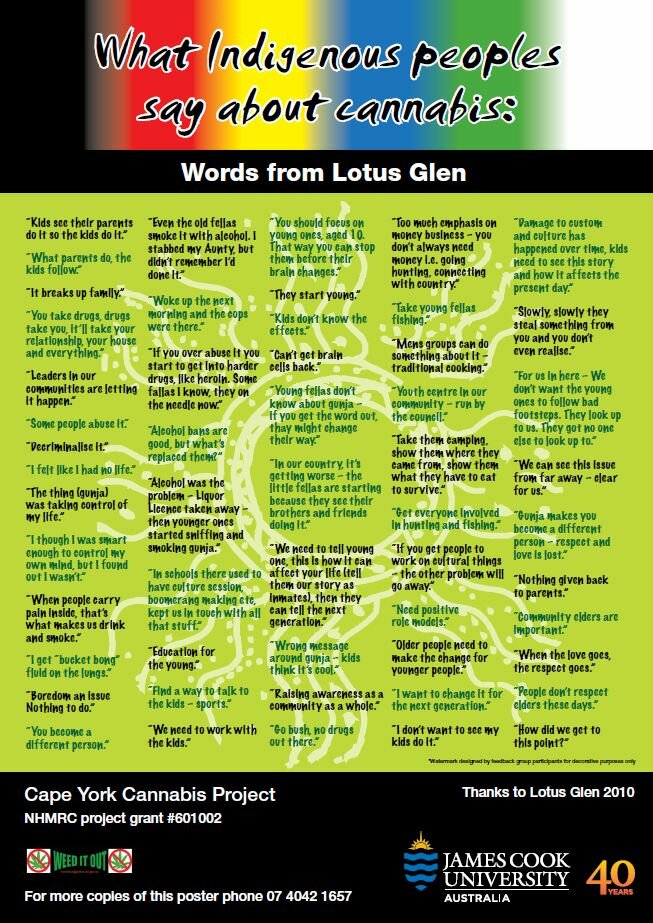
What indigenous people say about cannabis, words from Lotus Glen, QLD
This poster includes the thoughts of Aboriginal and Torres Strait Islanders about cannabis and its effect on people and communities. One person says, ‘kids see their parents do it, so the kids do it too,’, another says, ‘when people carry pain inside, that’s what makes us drink and smoke, while another says, ‘gunja makes you become a different person – love and respect are lost.’

The art is by an inmate at Silverwater Women’s Correctional Centre, NSW.
The five voices in her head are around the table. The box represents how she feels when she smokes dope: “in a box and unable to get out!” The white dots on her broken heart represent people she has hurt and now regrets hurting. The rain drops are “drops of hope” that she can escape the box and join the world, recover.

The art is by an inmate at Silverwater Women’s Correctional Centre, NSW.
The Aboriginal artist gave the following explanation: “The five voices in my head are around the table with the bong. The red spears represent the anger unleashed, while the blue line is medication which helps to control the anger.”
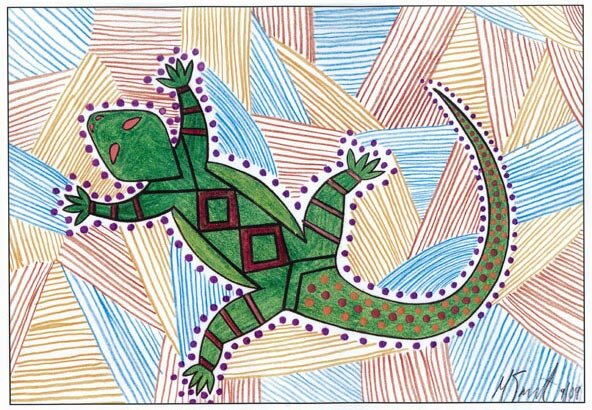
The art is by an inmate at Silverwater Women’s Correctional Centre, NSW.
The artist gave the following explanation: “The green lizard represents cannabis, it’s slippery and all my troubles slide away. The background represents how I feel with lines going in every direction – unable to figure out where I should be going.”
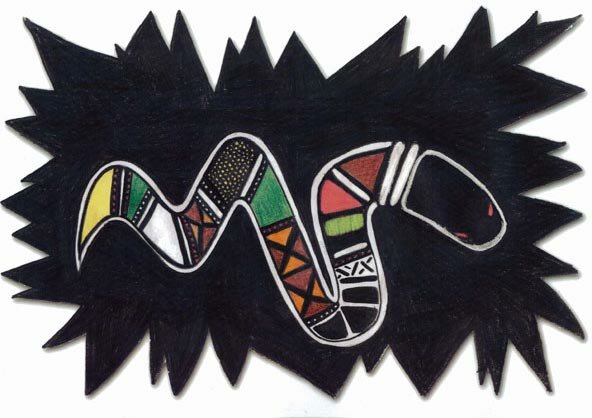
Bubunara Black Head by an inmate at Silverwater Women's Correctional Centre, NSW.
The artists says: “This represents the influence of pot and the triggers of schizophrenia that it has on me. The black head means the poison the pot has caused my brain and my life to choose the wrong pathways to deepen me into a black-hole. The whiteness within and around the python represents the light of the good values I do have when I can think straight. The yellow tail is what brings light to us all, letting me know that you cannot smoke away all your problems. If you help yourself your pain will soon be healed.”


Cannabis Yarns
Cannabis Yarns is about sharing stories of the effect of cannabis on Aboriginal and Torres Strait Islander communities and culture.
NCPIC has collaborated with Aboriginal communities in an urban (Macquarie Fields – Sydney) and a rural area (Katherine, NT) to produce two feature videos of the stories these communities have to share about cannabis and the solutions they see for more positive futures. We have combined these with artworks and stories submitted by people from across Australia, so we can all share the challenges of cannabis and work together to find solutions.




